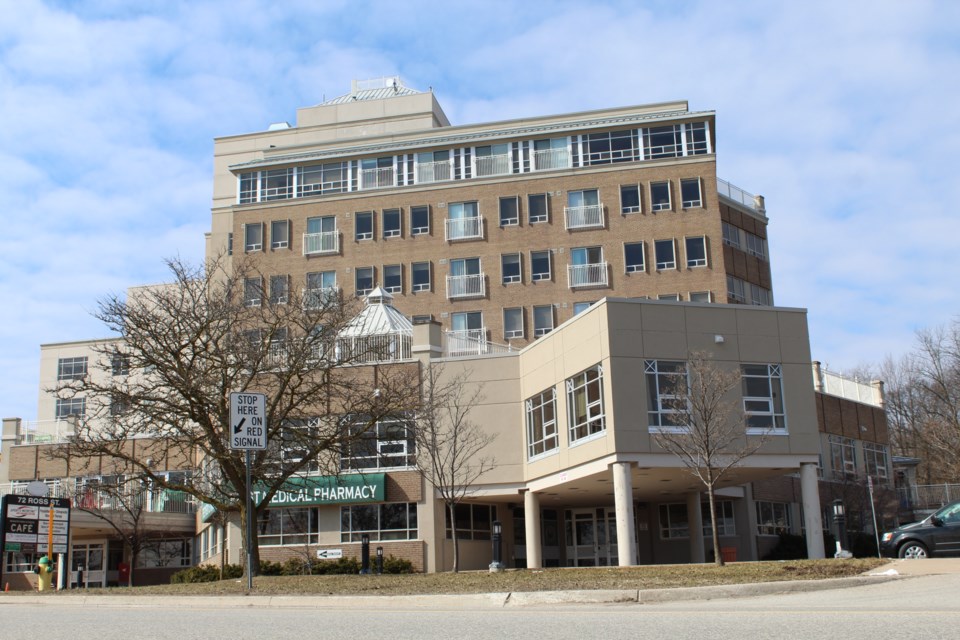Local health-care organizations are partnering to make X-rays more accessible for residents of long-term care (LTC) homes in the Barrie area.
According to a provincial announcement made on Tuesday, participating long-term care homes in the region are working together with the Barrie and Area Ontario Health Team, County of Simcoe and Royal Victoria Regional Health Centre (RVH) to improve care co-ordination and transportation for residents for non-urgent X-rays at RVH’s Medical Imaging department.
The Barrie and Area Ontario Health Team says long-term care residents typically have more complex health-care needs and often experience challenges accessing community-based and in-home imaging services and suitable transportation options. Currently, these residents can wait upwards of 15 days and, in some cases, four weeks to have non-urgent imaging completed.
Starting at the end of March, participating long-term care homes will identify residents who are eligible for the program and organize transportation to RVH through the county’s Paramedicine Program. Once at the Barrie hospital, a registered practical nurse (RPN) will stay with the resident for the duration of their visit to help co-ordinate care and ensure results are read before the resident is transported back home.
By providing transportation and increased care co-ordination, the Barrie and Area Ontario Health Team and its partners say they hope the program will significantly lower wait-times, improve access to timely care and reduce avoidable trips to the emergency department.
This program is supported by the Ontario government’s investment in specialized services and supports for long-term care (LTC) residents with complex needs.
“This is a game-changer for residents in LTC homes," Bill Krever, president and chief executive officer at Victoria Village in downtown Barrie, said in a news release. "Being able to directly access imaging services without long delays and without having to go through the emergency department will greatly enhance the quality and efficiency of health care for our most vulnerable residents.
"It’s an exciting initiative and shows what’s possible when we can connect and collaborate with our partners in health," he added.
Nancy Savage, RVH's executive vice-president of clinical and regional vice-president of Ontario Health (Cancer Care Ontario), says the new partnership is "critical" to ensuring residents in area LTC homes are getting the care they need in a timely manner.
"We are proud to work with our partners at the County of Simcoe and with area LTC homes to eliminate unnecessary visits to our emergency department," Savage said. "By getting these vulnerable patients access to diagnostic imaging studies in a more streamlined manner, we’re able to provide a better patient experience for long-term care residents in our region.”
Sarah Mills, director and chief of County of Simcoe Paramedic Services, said the "innovative" program will "bring efficiencies and increased co-ordination to our system and timely support to long-term care residents and their health-care providers."
The Barrie and Area Ontario Health Team is focused on the health and social care needs of residents in its communities. Together with its partners, the organization says it is working toward a care system that puts patients, clients, family members and caregivers "at the forefront of everything we do, creating a system that is people-focused, accessible, co-ordinated and inclusive for all members of our communities."
The province says this new pilot project, which also includes Humber River Hospital, will connect LTC residents to faster and convenient access to diagnostic services. Improved access to care will help improve residents’ quality of life and reduce "avoidable" emergency department visits or hospital stays. This also includes assessment, diagnostic testing and "timely interpretation" of their results.
“Ontario is fixing long-term care so that every resident experiences the best possible quality of life, supported by safe, high-quality care,” said Minister of Long-Term Care Paul Calandra. “By providing faster and more convenient access to diagnostic services, we will reduce the number of avoidable emergency department visits and in-patient hospital admissions, helping long-term care residents live happier and healthier lives.”
The province says it will initially invest $350,000 and $1.875 million annually over the next two years in the two initiatives announced Tuesday.



